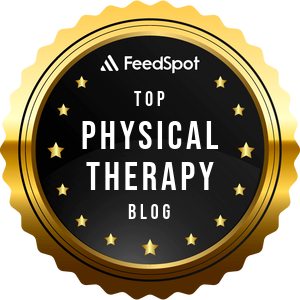Top 10 Misconceptions About Trigger Points and Myofascial Pain
Top 10 Misconceptions About Trigger Points and Myofascial Pain
Trigger points and myofascial pain are topics that generate a lot of discussion—and just as much confusion. Whether you’re a massage therapist, manual therapist, or athletic trainer, chances are you’ve encountered clients who suffer from persistent, nagging muscle pain that doesn’t respond well to stretching or traditional treatments. Maybe you’ve even felt those tight, knotted bands of muscle under your fingers and wondered exactly what’s going on beneath the surface.
Despite decades of clinical research and hands-on experience, misconceptions about trigger points continue to circulate. Some of these myths lead to ineffective treatments, while others cause professionals to overlook myofascial pain altogether. The truth is, trigger points are real, treatable, and clinically significant—but understanding them requires an open mind, critical thinking, and hands-on experience.
So, let’s set the record straight. Here are 10 of the biggest misconceptions about trigger points and myofascial pain, and the truth behind each one.
1. "Trigger Points Don’t Really Exist"
One of the most frustrating misconceptions is the claim that trigger points aren’t real. Skeptics argue that because trigger points don’t always show up clearly on imaging tests, they must be a fabrication of the massage and manual therapy world.
But ask anyone who’s experienced the deep, aching pain of an active trigger point, and they’ll tell you it’s very real. The work of Dr. Janet Travell and Dr. David Simons, who mapped out pain referral patterns and trigger point locations, provides a strong foundation for understanding myofascial pain. More recently, ultrasound imaging and microdialysis techniques have confirmed that trigger points are associated with changes in muscle fiber structure, biochemical inflammation, and local ischemia.
The reality is that trigger points don’t always conform to traditional medical diagnostic models. They require palpation-based assessment, experience, and a deep understanding of pain referral patterns—things that can’t always be captured by a scan.
2. "Trigger Points Are Just Muscle Knots"
Many people describe trigger points as "muscle knots," but this doesn’t quite capture the full picture. A muscle knot implies a physical twisting or tangling of muscle fibers, but what’s actually happening is much more complex.
Trigger points are hyper-irritable spots within a taut band of muscle where muscle fibers remain stuck in a contracted state. These areas experience poor blood flow, reduced oxygenation, and an accumulation of metabolic waste, which causes pain and dysfunction.
While trigger points feel like small, firm nodules when palpated, they are not literal knots that can be "untied" with deep pressure. In fact, aggressively pressing on them can sometimes make them worse by increasing inflammation and irritation.
Effective treatment often requires a combination of ischemic compression, stretching, heat, movement therapy, and even dry needling to restore normal muscle function.

3. "You Can Just Stretch Out a Trigger Point"
Many clients (and even some therapists) assume that if a muscle is tight, stretching will fix it. While stretching can be helpful for general muscle tension, it doesn’t directly release a trigger point.
A trigger point is essentially a localized area of dysfunctional muscle contraction, where a small segment of muscle fibers is locked into a shortened state. Stretching may lengthen the surrounding muscle, but it won’t necessarily deactivate the trigger point itself.
In some cases, static stretching can even aggravate an active trigger point, leading to increased pain and tightness. Instead, therapists should focus on manual therapy techniques, movement-based release strategies, and neuromuscular re-education to help restore normal function before adding stretching.
4. "Trigger Points Only Occur in Muscles"
It’s easy to assume that trigger points are limited to muscles, but research suggests that they may also involve fascia, nerves, and other soft tissues.
Fascia, the connective tissue that surrounds and supports muscles, plays a crucial role in movement, tension distribution, and pain signaling. When fascial restrictions develop, they can create patterns of dysfunction that mimic trigger point pain.
This is why some therapists integrate myofascial release techniques alongside trigger point therapy. A combined approach can help address both muscular dysfunction and fascial restrictions, leading to more effective, lasting relief.
5. "Trigger Points and Tender Points Are the Same Thing"
Some confusion exists between trigger points and tender points, particularly in the context of conditions like fibromyalgia.
A trigger point is a specific, localized area in a muscle that, when pressed, produces referred pain to a distant area. A tender point, on the other hand, is a localized area of soreness that does not produce referred pain.
Fibromyalgia patients, for example, have widespread tender points but not necessarily active trigger points. Differentiating between the two is crucial for choosing the right treatment approach.

6. "Trigger Points Only Develop After an Injury"
While injuries can certainly contribute to trigger point formation, they are not the only cause. Repetitive movement patterns, poor posture, stress, and prolonged inactivity can also lead to the development of trigger points.
For example, sitting at a desk all day with poor ergonomics can create trigger points in the trapezius and levator scapulae muscles, leading to chronic neck and shoulder pain.
Trigger points can even develop as a compensatory response to weakness, instability, or imbalances elsewhere in the body. A person with weak gluteal muscles, for instance, may develop trigger points in their lower back or hamstrings due to overcompensation.
7. "Applying More Pressure Will Always Release a Trigger Point"
There’s a common belief that trigger points need to be "broken up" with intense pressure. While deep tissue work can be effective, too much force can irritate the nervous system and cause rebound pain.
Sometimes, a gentler approach—like sustained pressure, stretching, or movement-based techniques—is more effective. The goal isn’t just to "release" the trigger point, but to restore normal function to the muscle and nervous system.
8. "Trigger Points Are Permanent"
Some clients feel like they’ll be stuck with their trigger points forever, but this isn’t true. While chronic trigger points can persist if underlying factors aren’t addressed, they can absolutely be treated and resolved.
Regular manual therapy, movement corrections, hydration, stress management, and ergonomic changes can all contribute to long-term relief.

9. "Trigger Points Always Cause Pain Where They Are Located"
One of the defining characteristics of a trigger point is that it often refers pain elsewhere. This is why people with trigger points in the gluteus medius sometimes think they have sciatica, or why trigger points in the trapezius can cause tension headaches.
Understanding referral patterns is essential for effective treatment.
10. "Trigger Points Are Just a Trend"
Trigger point therapy has been around for decades, backed by research and thousands of case studies. While our understanding of them continues to evolve, they are far from a passing trend.
For massage therapists, manual therapists, and athletic trainers, learning how to assess and treat trigger points is a valuable skill that can make a huge difference in patient outcomes.

Final Thoughts
Trigger points and myofascial pain are real, treatable, and clinically significant. By understanding what they are—and what they aren’t—therapists can provide better care, improve treatment outcomes, and help clients move pain-free.
Want to learn more? Check out our online trigger point therapy courses and take your skills to the next level!
Disclaimer
This article is for informational and educational purposes only and is not intended to replace medical advice, diagnosis, or treatment. The information provided is based on current research and clinical experience but should not be used as a substitute for professional medical consultation.
Manual therapy techniques, including trigger point therapy and myofascial release, should only be performed by trained professionals within their scope of practice. If you or your clients experience chronic pain, muscle dysfunction, or unresolved symptoms, seek guidance from a qualified healthcare provider before attempting any new treatments.
Niel Asher Education (NA Education) provides continuing education for manual therapists and healthcare professionals, but does not make claims regarding the effectiveness of any specific technique or therapy. Always follow best practices, ethical guidelines, and applicable regulations in your professional field.
References
- Travell, J. G., & Simons, D. G. (1999). Myofascial Pain and Dysfunction: The Trigger Point Manual, Volume 1: Upper Half of Body. Lippincott Williams & Wilkins.
- Travell, J. G., & Simons, D. G. (1992). Myofascial Pain and Dysfunction: The Trigger Point Manual, Volume 2: Lower Half of Body. Lippincott Williams & Wilkins.
- Dommerholt, J., & Fernández-de-Las-Peñas, C. (2018). Trigger Point Dry Needling: An Evidence and Clinical-Based Approach. Elsevier Health Sciences.
- Gerwin, R. D., Dommerholt, J., & Shah, J. P. (2004). "An expansion of Simons' integrated hypothesis of trigger point formation." Current Pain and Headache Reports, 8(6), 468-475.
- Fernández-de-Las-Peñas, C., & Dommerholt, J. (2014). "Myofascial trigger points: Peripheral or central phenomenon?" Current Rheumatology Reports, 16(1), 395.
- Simons, D. G. (2002). "Clinical and etiological update of myofascial pain from trigger points." Journal of Musculoskeletal Pain, 10(1), 115-121.
- Quintner, J. L., Bove, G. M., & Cohen, M. L. (2015). "A critical evaluation of the trigger point phenomenon." Rheumatology, 54(3), 392-399.
- Lucas, K. R., Polus, B. I., & Rich, P. A. (2004). "Latent myofascial trigger points: Their effects on muscle activation and movement efficiency." Journal of Bodywork and Movement Therapies, 8(3), 160-166.
- Bron, C., Dommerholt, J., Stegenga, B., Wensing, M., & Oostendorp, R. A. (2011). "High prevalence of shoulder girdle muscles with myofascial trigger points in patients with chronic tension-type headache." Journal of Manual & Manipulative Therapy, 19(1), 55-63.

Ready to take your practice to the next level?
Explore which continuing education course is right for you.














